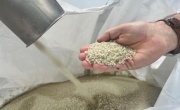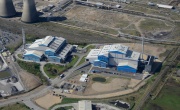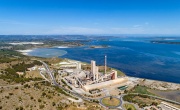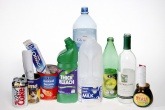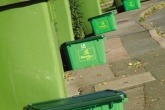Increase in waste generated sees drop in Scotland’s recycling
Scotland has reported a slight drop in its recycling rate to 58.9 per cent for 2017 as the total amount of waste generated increased by 5.5 per cent, according to official figures from the Scottish Environment Protection Agency (SEPA).
Official statistics for waste from all sources (WFAS) released on Wednesday (27 March) reveal that Scotland’s recycling rate fell from 59.1 per cent in 2016 (a revision of the originally reported 61 per cent figure), to 58.9 per cent in 2017. This was despite recycling 142,195 tonnes more waste than the previous year in real terms, sending a total of 6.93 million tonnes to be recycled.
 The increase in recycling was offset by the fact that 620,000 tonnes of extra waste was generated in 2017, bringing the total amount of waste generated in Scotland that year to 11.82 million tonnes. Most of this increase can be attributed to construction and demolition (C&D) waste, which rose by 600,000 tonnes, representing an increase of 10.8 per cent.
The increase in recycling was offset by the fact that 620,000 tonnes of extra waste was generated in 2017, bringing the total amount of waste generated in Scotland that year to 11.82 million tonnes. Most of this increase can be attributed to construction and demolition (C&D) waste, which rose by 600,000 tonnes, representing an increase of 10.8 per cent.
The figures also show a significant increase in the amount of food waste being sent for composting or anaerobic digestion, rising by 16.6 per cent to 302,829 tonnes; improvements in organics recycling were a key part of the large nine per cent rise in Scotland’s WFAS recycling rate between 2015 and 2016. The amount of biodegradable municipal waste sent to landfill also fell once again, down from 1.14 million tonnes in 2016 to 1.09 million tonnes in 2017.
The overall quantity of waste being sent to landfill increased by 0.1 per cent in 2017 to 32.6 per cent of all waste – significant work remains to be done to achieve Scotland’s goal of a maximum five per cent of waste to landfill by 2025 – with the total amount of waste disposed of through both landfill and incineration increasing by 1.3 per cent to four million tonnes. A total of 761,581 tonnes of waste were sent for energy recovery in 2017, an increase of 14.7 per cent from 2016.
Scotland’s steps towards a circular economy
Scotland has made significant efforts in recent times to move away from a traditional linear economic model, which sees products thrown away at their end of life, towards a circular model that keeps materials in circulation for as long as possible. In 2016, the Scottish Government launched its circular economy strategy, ‘Making Things Last’, in collaboration with SEPA and Zero Waste Scotland, setting out a path towards more circular and sustainable use of resources. It has also made funding available to help businesses move to circular models and forged ahead with plans to introduce a deposit return scheme (DRS) for beverage containers in a bid to reduce plastic waste.
Commenting on the figures, Iain Gulland, Chief Executive at Zero Waste Scotland, said: “We are getting smarter about ways to deal with waste but the real challenge is in reducing it in the first place. More thought and planning needs to be given to circular economy approaches that enable products to be used time and again.
“Improvements can take place across the board. The implementation of the deposit return scheme is an example of one way where materials can be given a new life rather than simply being thrown away. To make an impact on waste, we need to take this approach to reusing our resources and make it common place.”
Terry A’Hearn, SEPA’s Chief Executive, added: “The scale of the environmental challenge is enormous and we know that in Scotland we currently use the resources of three planets, but only have one.
“The most successful countries in the 21st century will be resource efficient, circular economies, where what once was waste is valued as a resource. As such, the latest figures give communities and businesses a fresh focus for the opportunity ahead.”
Though Scotland’s WFAS recycling rate is very healthy, it remains in last place in the UK when it comes to its Waste from Households (WfH) recycling rate, with a recycling rate of 43.5 per cent. In the 2017 calendar year, Wales retained its place as the top recycling nation on that front, recycling 57.6 per cent of its WfH, while Northern Ireland overtook England, rising to 46.3 per cent. England increased its WfH recycling rate to 45.2 per cent in 2017, though figures for 2017/18 show that it fell to 44.8 per cent across that period.
The full official statistics document for Scotland’s WFAS in 2017 can be found on the SEPA website.

